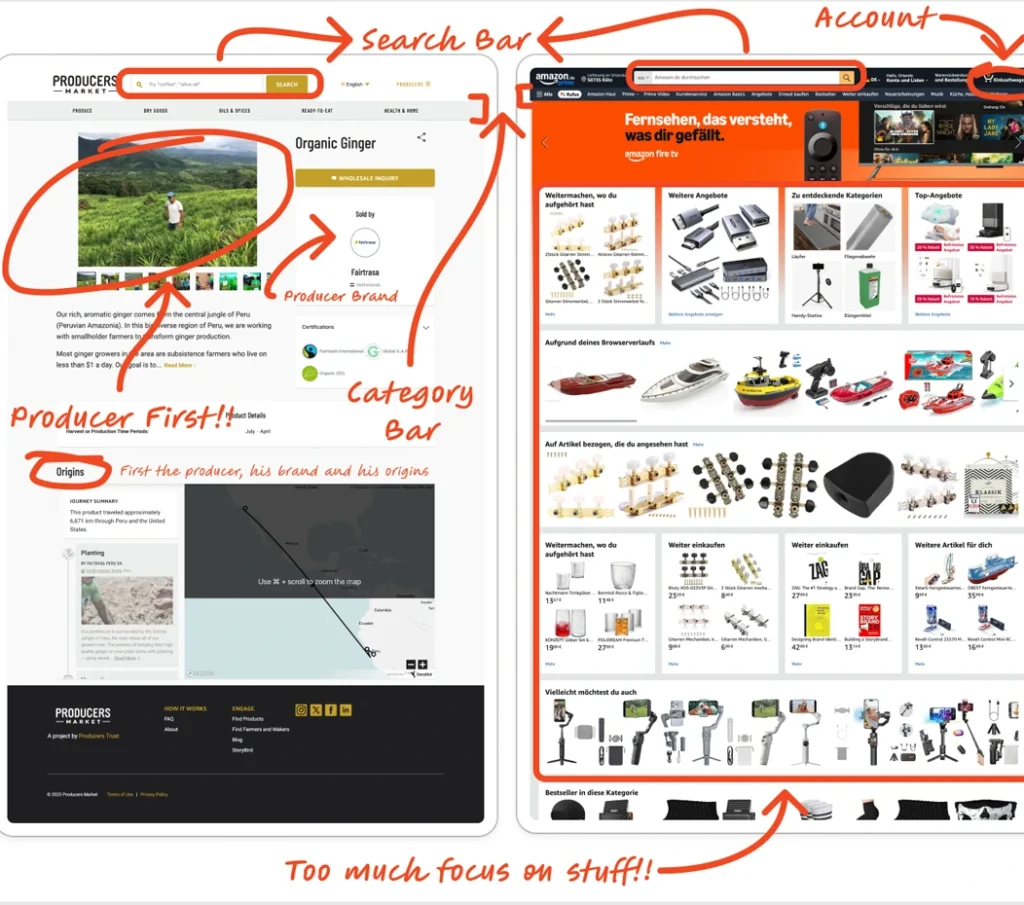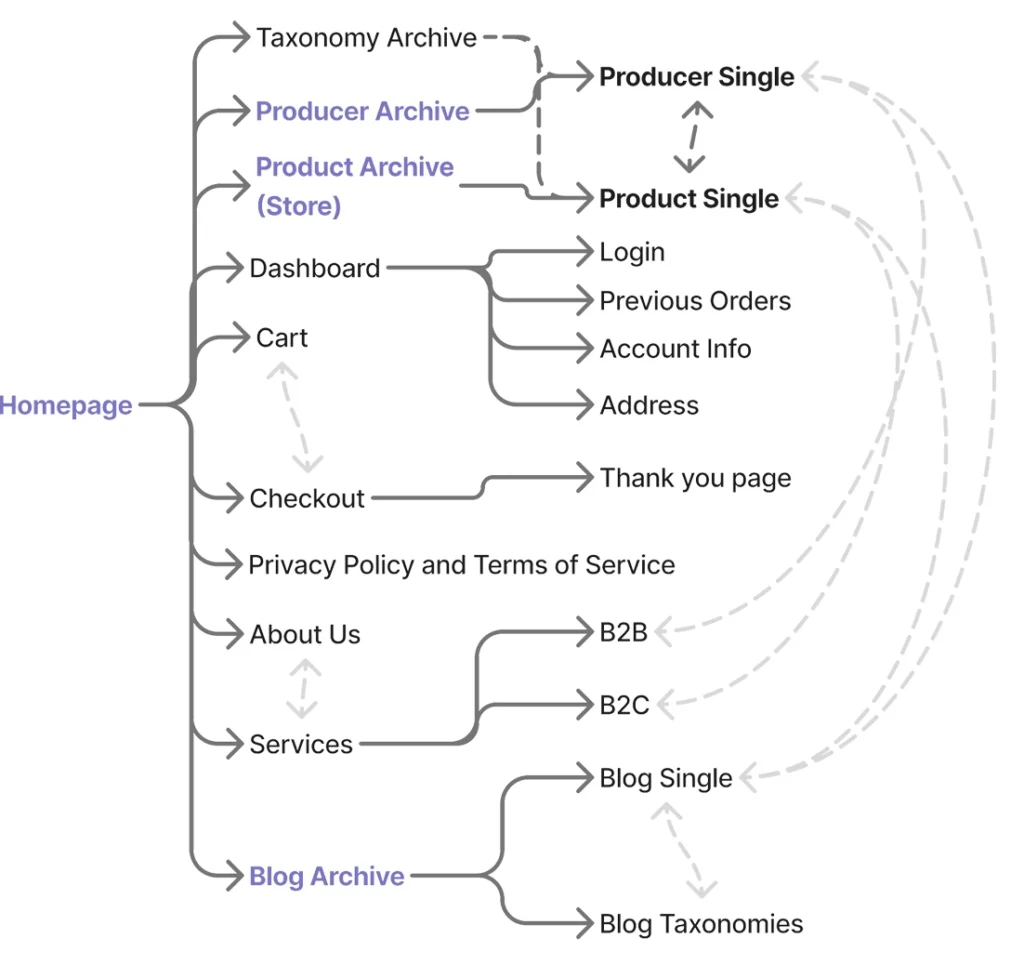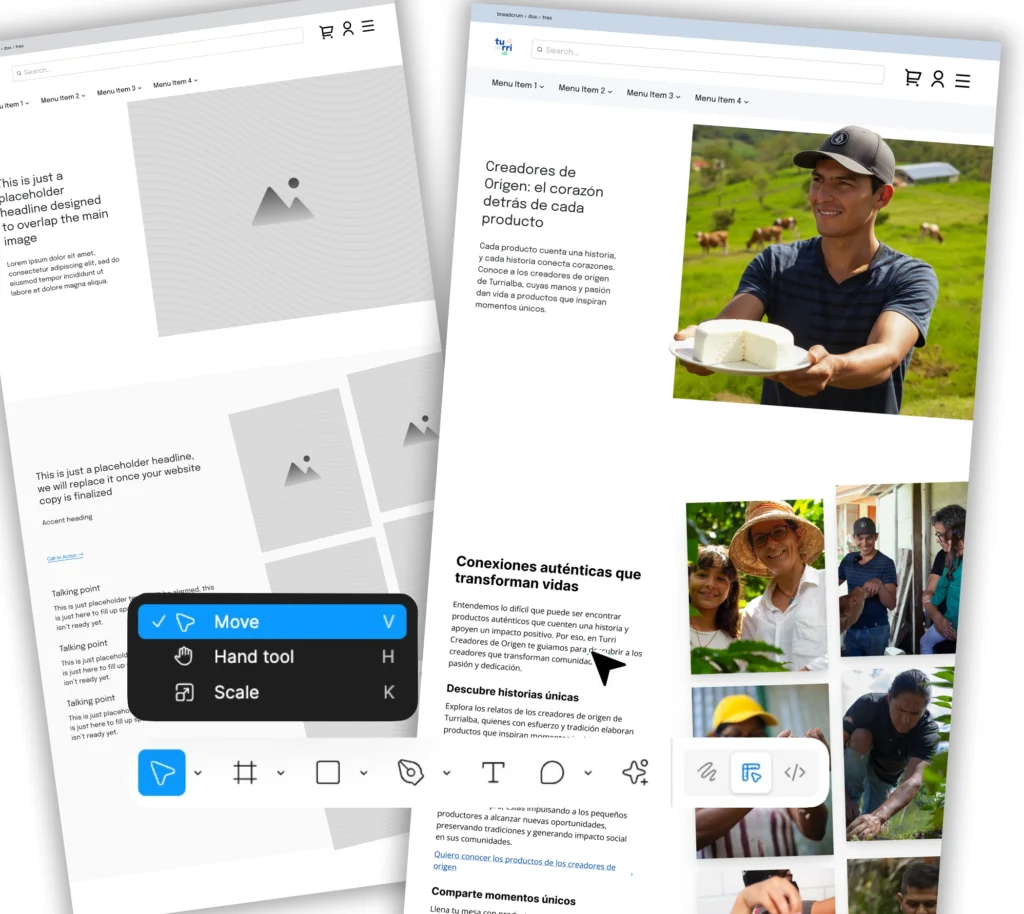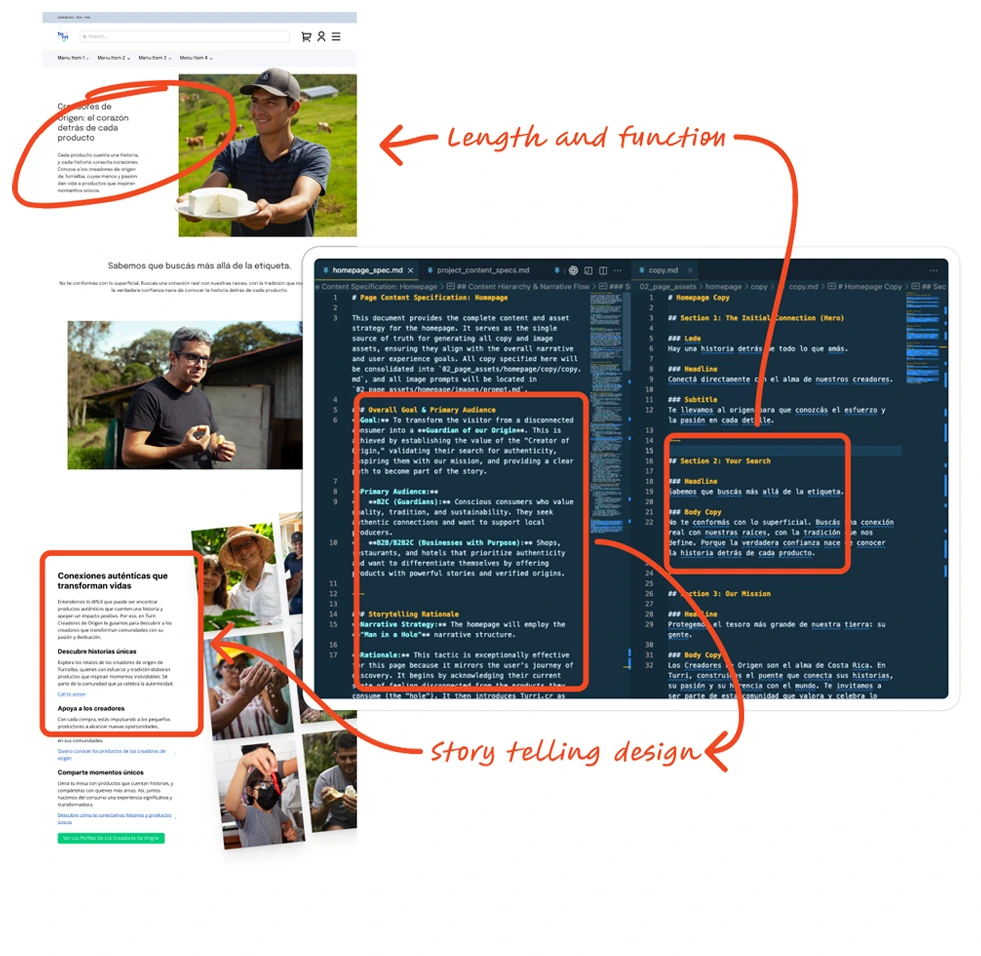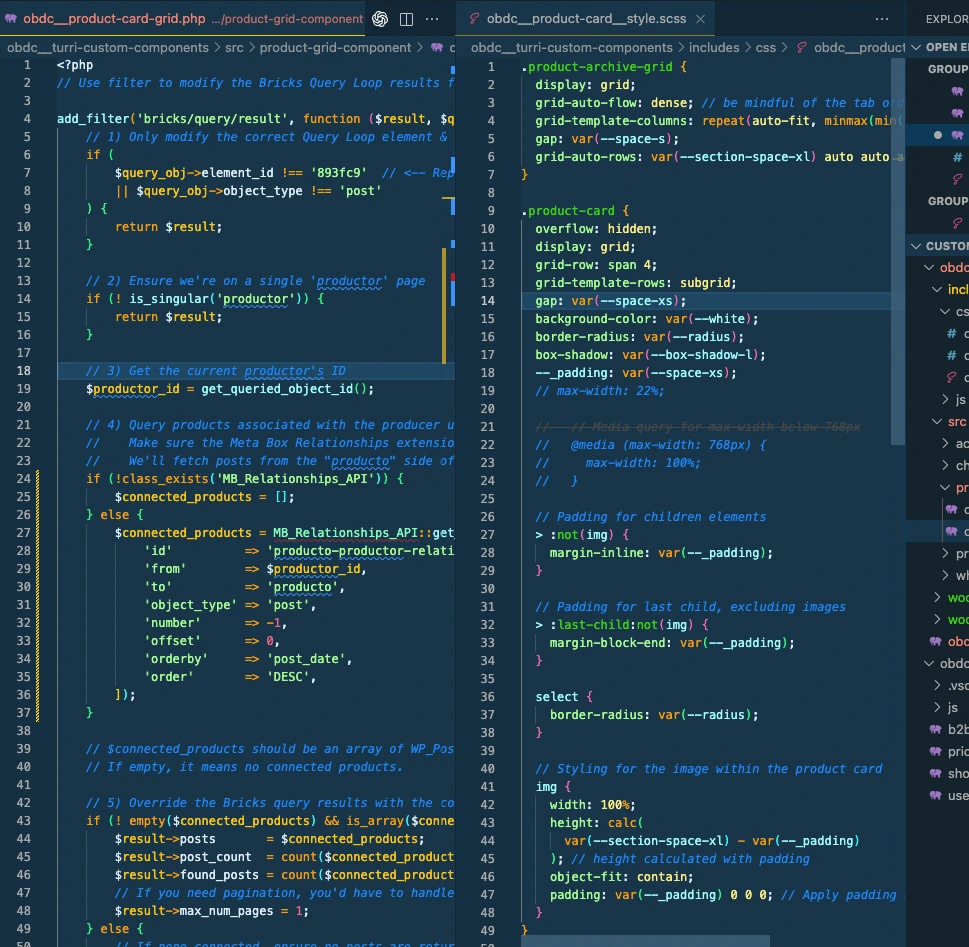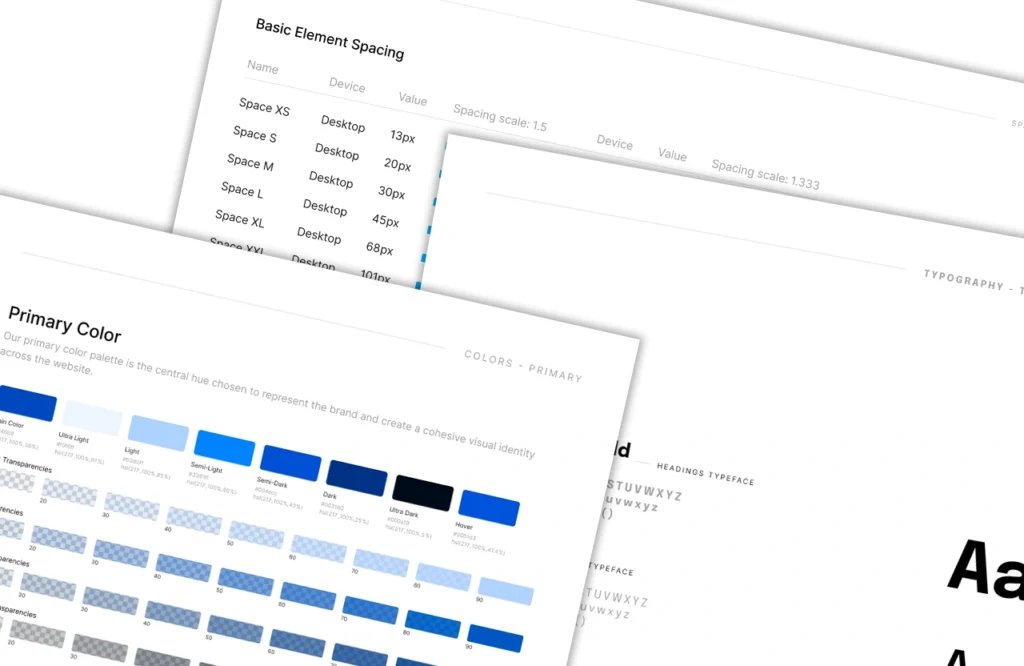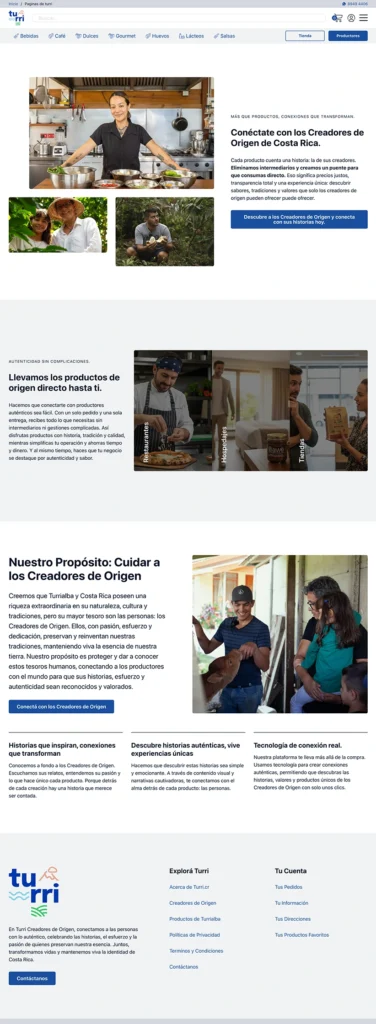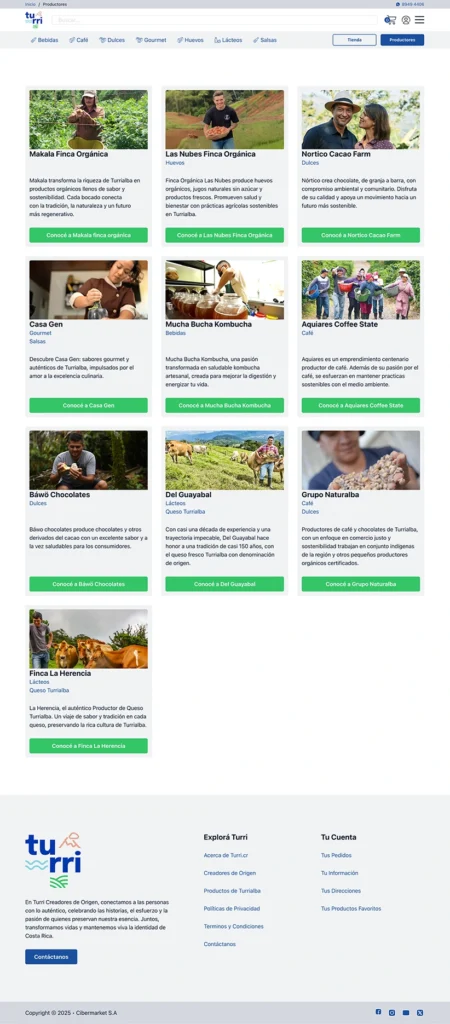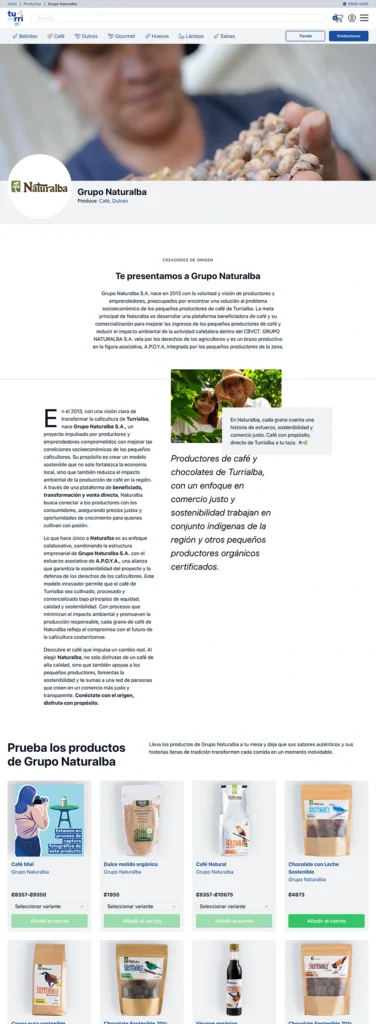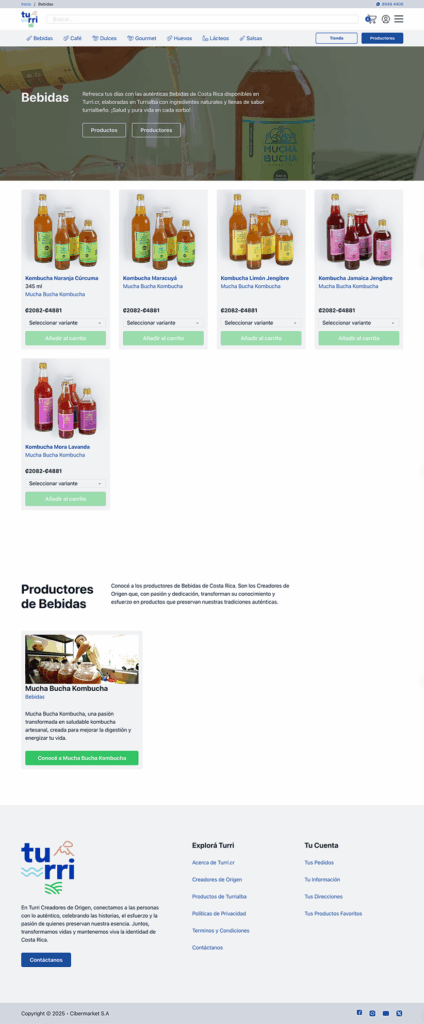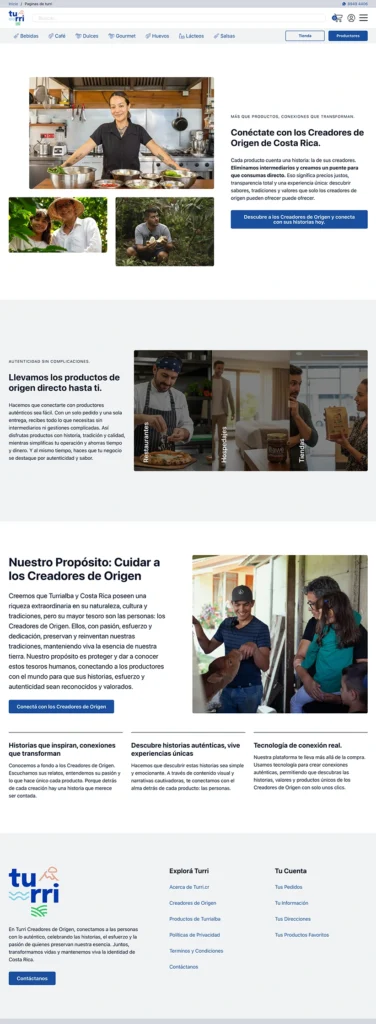UX/UI Design and Web Development of Turri Creadores de Origen Website

Turri Creadores de Origen is a multisided marketplace platform that facilitates the selling of sustainable, origin-based products while revealing the human stories behind them.
By combining digital design, storytelling, and community values, it transforms commerce into connection — turning local authenticity into a shared experience of trust and meaning.
Case Description
Context
Many rural producers in Costa Rica craft exceptional products but struggle to reach markets that value authenticity and sustainability. Their stories often remain invisible, lost between intermediaries and fragmented communication.
Turri Creadores de Origen emerged to transform this gap into an opportunity — building a digital marketplace that connects producers and conscious consumers through storytelling, design, and technology. The project redefines commerce as a channel for cultural preservation and shared growth.
Objectives
- Integrate storytelling and commerce into a cohesive user flow
- Build a modular CMS structure ready for marketplace expansion
- Design a user experience rooted in trust and cultural authenticity
- Empower producers to manage and update their own profiles easily
- Ensure a performant, responsive, and visually consistent interface
- Create a foundation for data analytics and AI-assisted storytelling
Process
Results
Facing the challenge of connecting rural producers with conscious consumers through authentic narratives, we designed a digital marketplace that prioritized storytelling over pure transactions. This approach revealed that fostering emotional connections significantly boosts user engagement and community building, transforming commerce into a meaningful cultural exchange. This experience underscored the power of content-first design in creating impactful user experiences.
Main TakeAway
- Successfully launched a fully functional Turri Creadores de Origen website, establishing a multisided marketplace that effectively connects producers and conscious consumers through rich storytelling and a user-centric interface.
- Delivered a scalable design system and modular CMS architecture, providing a robust foundation for easy content management, future feature expansion, and long-term platform adaptability.
- Established comprehensive Page Content Specifications and Editorial Guidelines, ensuring a consistent brand voice and messaging across the entire digital platform.
